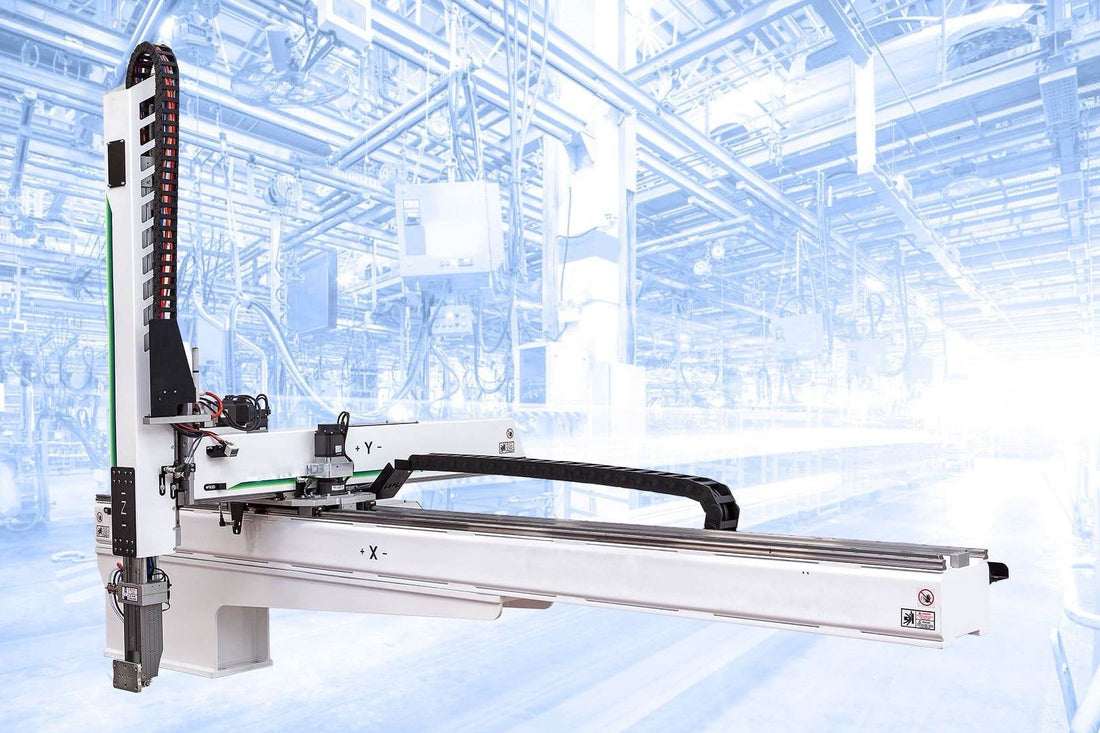
3-Axis Robots: The Workhorses Powering Modern Automation
Share
When people imagine industrial robots, they often think of high-speed arms assembling cars or intricate humanoid machines. But behind much of today’s reliable, cost-effective automation are simpler, highly effective solutions — 3-axis robots.
Also known as Cartesian robots, these systems form the foundation of countless manufacturing and packaging lines around the world. Their precision, adaptability, and simplicity make them a key player in industries ranging from electronics to logistics to medical devices.
What is a 3-Axis Robot?
A 3-axis robot moves along three linear axes — X, Y, and Z — much like the way you might picture a crane or a 3D printer operating.
Rather than pivoting or rotating like a robotic arm, 3-axis robots move in straight lines, making them perfect for pick-and-place tasks, assembly, and material handling where precise, repeatable movement is critical.
Why 3-Axis Robots Are Essential
1. Simplicity and Reliability
With fewer moving parts compared to multi-axis articulated arms, 3-axis robots offer incredible reliability. They’re easy to program, easy to maintain, and less prone to mechanical failure — making them ideal for continuous, high-volume operations.
2. High Precision and Repeatability
3-axis robots can achieve extremely tight tolerances. Their straightforward movement structure minimizes the risk of drift or error, which is why they're often used for tasks like PCB assembly, CNC machine tending, and lab automation.
3. Cost-Effective Automation
For applications that don’t require complex motions, 3-axis systems deliver automation at a fraction of the cost of more complex robots. Their lower price point and maintenance simplicity allow businesses to achieve faster ROI.
4. Scalability and Customization
3-axis robots are highly customizable. You can easily adjust their size, payload capacity, speed, and even add modular tooling (like grippers, suction cups, or screwdrivers) to fit specific applications without overhauling the entire system.
Where Are 3-Axis Robots Used?
-
Manufacturing Assembly Lines: Moving parts between stations, loading and unloading conveyors, placing components into assemblies.
-
CNC Machine Tending: Loading raw materials into CNC machines and removing finished parts with speed and consistency.
-
Packaging and Palletizing: Picking products and stacking them in uniform patterns for shipment.
-
Electronics Manufacturing: Delicate placement of small electronic parts like circuit boards and microchips.
-
Medical and Pharmaceutical: Filling vials, assembling medical devices, or conducting high-precision lab work.
The Future of 3-Axis Robots
As automation demands continue to grow, 3-axis robots are evolving to stay competitive:
-
Integration with Vision Systems: Combining cameras and sensors allows Cartesian robots to adjust dynamically to slight product or position variations.
-
Higher-Speed Drives: Modern 3-axis systems are being equipped with faster servo motors and smarter control software to meet tighter cycle times.
-
IoT and Smart Monitoring: Adding sensors and connectivity enables predictive maintenance, real-time tracking, and better overall efficiency.
Even as collaborative robots (cobots) and multi-axis articulated arms become more popular, the 3-axis robot remains an unbeatable solution for many tasks where efficiency, simplicity, and cost control are paramount.
In the race toward automation, not every solution needs to be complex.
3-axis robots prove that elegant, straightforward engineering often delivers the most powerful results — boosting productivity, ensuring quality, and helping manufacturers stay competitive in a fast-moving world.
Whether you’re launching your first automation project or expanding an existing line, 3-axis robots are a proven way to drive success.
